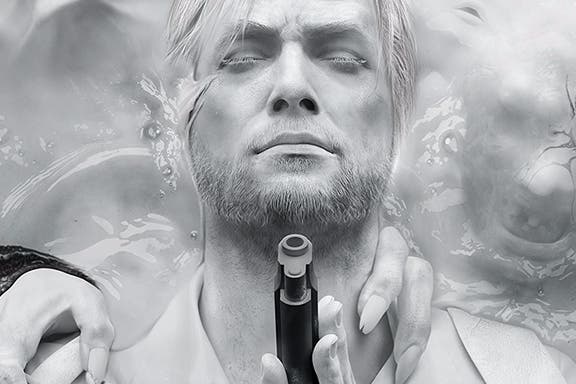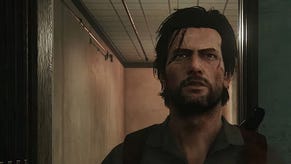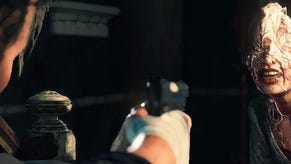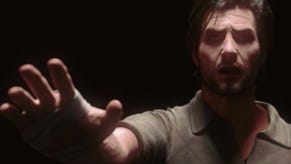The Evil Within 2 review
Assassin's creep.
The scariest thing you'll hear in The Evil Within 2 isn't the sound of your very own daughter burning alive, or the paralysing roar of an alerted zombie, or even that witchy refrain through your PS4 controller's speaker as one, especially tenacious apparition shadows you from room to room. It is, in fact, a single dialogue line: "I'll mark its location on the map for you." Another throwback horror escapade from Shinji Mikami, albeit with DLC designer John Johanas in the director's chair, The Evil Within 2 takes cues not just from the legendary Resident Evil titles but also, rather terrifyingly, from open world tactical shooters.
Set in a collapsing, monster-plagued VR simulation of Union, a picturesque American town, the game's 15-20 hour plot includes extended tours of three generously proportioned urban maps - each packed full of crafting resources, upgrades, collectibles and backstory documents, and pegged down by safehouses where you can assemble weapons and ammo, save the game and accept optional missions from conveniently useless side characters. While roaming and foraging you'll call upon a chunky Communicator that lets you track objectives and tune into recordings of past events, in echo of Tom Clancy's The Division. You'll also contend with a greater emphasis on stealth and terrain tactics than in the previous game: there are now AI awareness indicators to help offset the higher risk of ambush, a glowing silhouette effect for when crouching in vegetation, and tacit "base" layouts where you might, for instance, use your trusty crossbow to lay tripmines between parallel crates, or throw bottles to create a distraction.
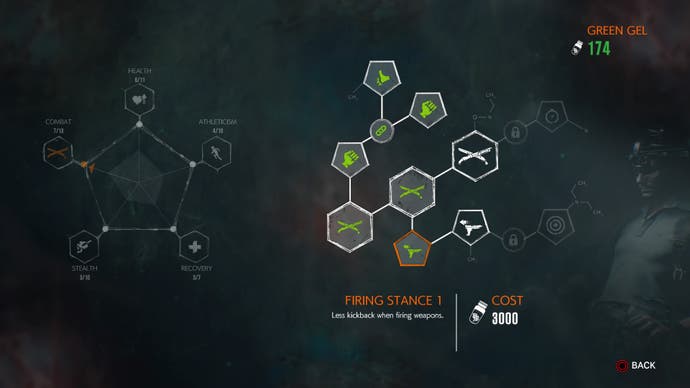
These are ideas the likes of Ubisoft Montreal have long since bled dry, and initially, their presence here feels abominable - like asking the Babadook to wear a ghillie suit, or handing Freddy Krueger a sniper rifle. Factor in the omission of some of the original's weirder intricacies, such as burning corpses to stop them resurrecting, and it's hard to avoid the suspicion that The Evil Within 2 is an awkward cash-in - a forced reconciliation between Mikami's eccentric vision and a "safer", more callous species of action game. That sense of dismay never entirely dissipates in the course of the story - it doesn't help that the basic zombie/mutant AI is far too braindead to support this kind of open-ended tactical horseplay, peering at its surroundings with pantomime caution as you squat 10 metres away, aiming a flamethrower. But fortunately, the open world parallels only go so far.
For one thing, the ground-level maps are linked by a dozen or so nicely wrought corridor horror episodes - laboratories dotted with tactically advantageous cannisters of liquid nitrogen, for example, and velvet chambers hung with monochrome close-ups of body parts. As with the original, the scare tactics are all secondhand - think fiends gate-crashing your character's reflection, corridors mutating when not in view or doors that slam shut as you near - but there are some gorgeous motifs and scenarios that betray Tango's appreciation for peers in horror at large. In one cavernous hall, opulent red drapes recall the Red Room of Twin Peaks, shifting like jellyfish tendrils as you pass. There's a stairwell haunted by the swing of a massive pendulum, and a bungalow that slowly morphs into something rather less homely as you search for an exit. The game is stronger on this count towards the beginning, both because you're less capable and because later sections opt for drearily industrial and/or Gothic aesthetics, but Tango's atmospheric range is impressive. I was seldom scared by what lurked around each corner, but I was always eager to lay eyes on it.

The exterior areas, meanwhile, aren't quite the mounds of filler content they may resemble. At The Evil Within 2's most insidious, it uses the association with busywork-driven open worlders to lull your suspicions, building complacency ahead of a traumatic encounter. You'll stop to investigate a garage en-route to a safehouse, expecting nothing more dramatic than a few chunks of pipe to fashion harpoons with, only to find yourself mysteriously locked in. Then the screen assumes a blue tint, and something starts to bang on the door. Most buildings harbour a surprise or two, even if it's just a regular zombie waiting to crawl out from beneath a car, and if trundling around in a crouch to avoid attention grows tiresome, there are, thank the gods, no fetchquests.
As with the new world structure, the story leaves a bit of a sour taste. It's another tale of Sad Dads vs Mad Lads & Hags, with Sebastian entering the Union simulation in search of his daughter Lily, stolen away years before to serve as the core of a neural networking experiment that has taken a turn for the diabolical. Much of the drama consists of helping Sebastian face down manifestations of his fatherly guilt and grief - the thrust of many a psychological horror game from the original Silent Hill to this year's Outlast 2, and not explored with much wit or swagger here.
Though well-performed and deftly written, the characters are cut from tired-out archetypes. Lily is that special flavour of bright-eyed innocence that has you fumbling for a crucifix. There's an all-action soldier girl who exists to remind you that girls can be Tough Guys too, some scientifically unsound meditations on the habits of psychopaths, and a foppish serial killer who says things like "flesh is the ultimate canvas". The game might have gotten away with all this nonsense if it were more self-aware, a la Bruce Campbell's performance in The Evil Dead, and the writing does occasionally border on parody. "There's a lock on this door," Sebastian muses at one point. "It looks like if I had a key I could open it." Later, on discovering the key: "Where there's a key there's a lock. Wonder where it could be?"
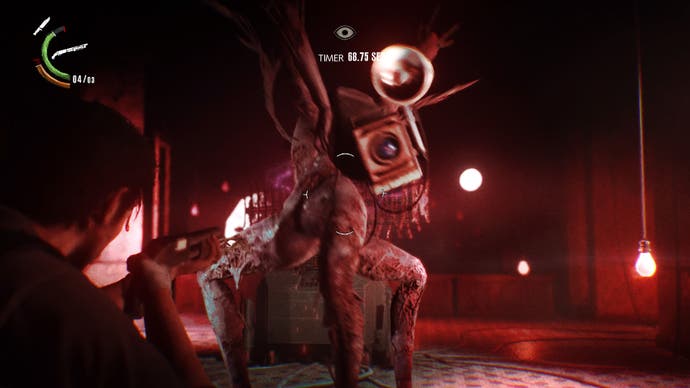
If he's a mopey leading man, Sebastian scrubs up well enough in a fight - no thanks to a clumsy new lock-to-cover mechanic (annoyingly mapped to R1 by default) that is extremely choosy about which surfaces you can hide behind, occasionally teleporting you through objects in a fit of pique. You're slower to move and turn than in most contemporary third-person games but dealing with this is, of course, part of the thrill, and if your adversaries make for wonky stealth fodder, they're slippery skirmishers, lurching and wobbling theatrically as they approach to throw off your aim.
Resident Evil 4's greatest contribution may yet prove transforming the zombie from a shuffling, bovine bullet-sponge into a kind of improv circus tumbler - stressfully hard to read, even in the throes of death. The Evil Within 2 lives up to that tradition, though I think Resident Evil 5's mutating infested have the edge. Sturdier threats include a giggling juggernaut that squidges itself together from scattered hunks of flesh, and a boss that is, in fact, a nicely reimagined compilation of bossfights from the original game. There's also a balding girl in a night-dress who - well, let's just say you should think twice about stabbing her in the back of the head.
The original Evil Within was hailed as a sort of alternate-history exercise, a game from a timeline in which Shinji Mikami carried on working with Resident Evil after shipping the revolutionary fourth instalment, released when Resident Evil itself was deemed to be at low ebb. Though far from a deranged new breed of monster it was an intriguing mutation, blurring Resi 4's pace and direction with the cerebral menace of a Silent Hill. The sequel is another curious outgrowth, but its changes and additions often feel more wayward than fascinating, and in key respects - the story, certain levels, those niggles in stealth and combat - it falls rather flat. Still, there are chills and spills enough here to sate most patrons of the bloody arts. Whether a third game is warranted at this point is another matter.
